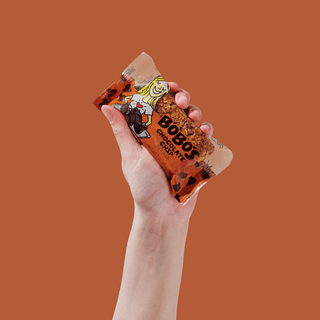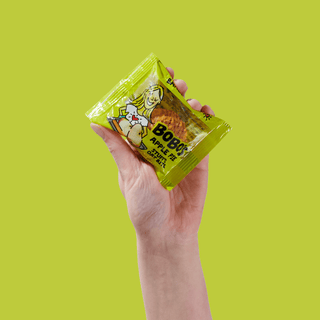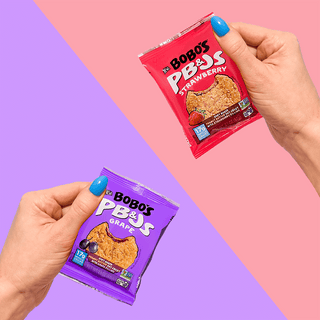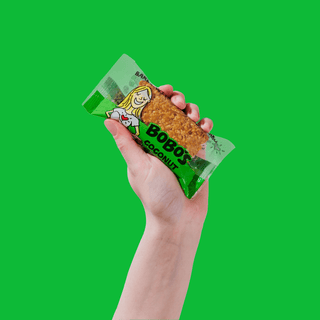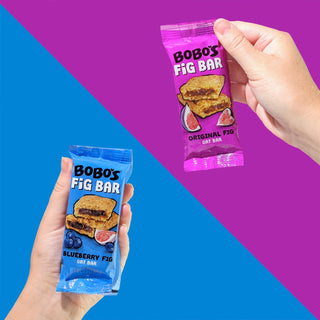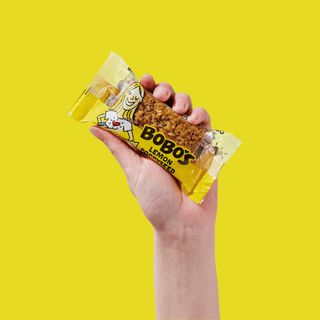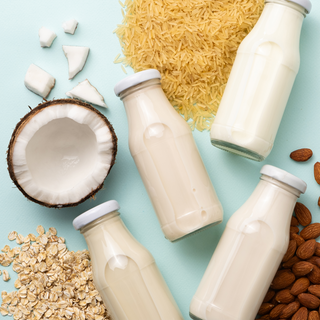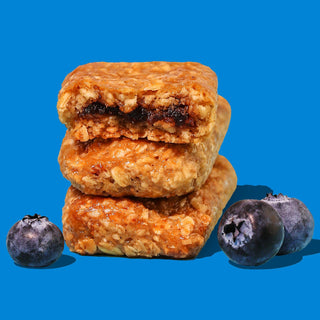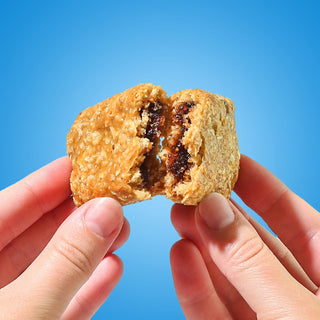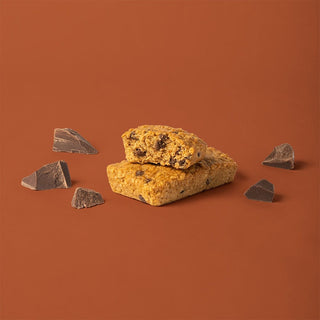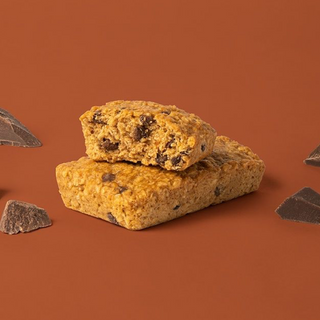Made with:
By Emma Caplan-Fisher
Over the years, many people have adopted dietary and lifestyle changes, including dairy free eating. If you have specific health concerns or are otherwise considering changes to your diet and lifestyle, it might be worthwhile to learn what going dairy free can mean for you.
Keep reading to explore several reasons people often choose to eliminate dairy and the benefits of doing so, along with some dairy alternatives that deliver the nutrients our bodies need and some tasty recipes for simple, easy dairy and gluten free meal planning.
Reasons for choosing a dairy free diet
Whether you're considering going dairy free or adopting any other type of eating plan and begin to remove or add foods to your diet, it's important to remember that everyone is built differently and will handle foods differently — dairy included.
With that in mind, here are some common reasons why people might choose to follow a dairy-free diet:
Lactose intolerance. Lactose intolerance occurs when our bodies can't digest lactose (a sugar found in dairy). Symptoms vary by person but can include diarrhea, gas, bloating, nausea, and stomach pain. While there's no treatment for lactose intolerance, dietary changes, like eliminating dairy, can alleviate symptoms.
Milk allergies. Milk or dairy allergies come from an abnormal immune system response to dairy products. Symptoms can include digestion issues, hives, itching or swelling around or in the mouth, vomiting, wheezing or coughing, shortness of breath, or even a life-threatening anaphylaxis reaction.
Ethical reasons. Some people question or are against how cows or other animals are treated in the production of dairy products. So, for ethical reasons, they choose a dairy-free lifestyle. Issues can include calves separated from mothers, dehorning, forced impregnation, intensive milk production, factory farming, and the killing of animals.
Personal health choices. You may be facing any number of personal health issues that eliminating dairy could help with, including inconsistent digestion, bloating, fatigue, acne, thyroid inflammation, and weight gain.
Health benefits of a dairy free diet
While the health benefits of a dairy-free diet can be noticed quickly for some, it's normal for noticeable changes to take time once you've made the switch. Much of this depends on the specific dairy products you regularly consumed before and how your body handled ongoing dairy consumption.
That being said, here are some common health benefits of going dairy-free:
Reduced bloating & gas and better digestion. If you regularly experience bloating and indigestion it could be due to the intolerance of lactose, which is found in dairy. This intolerance and the resulting bloating, gas, and/or indigestion happens from the lack of an intestinal tract enzyme (lactase) that's needed to digest lactose properly.
Lower inflammation. A milk sensitivity or allergy can create gut (and body) inflammation, and it's important to maintain a healthy gut to reduce this, which eliminating dairy can help with. Interestingly, those who don't have dairy issues might find dairy products, particularly fermented products like yogurt, to be just the opposite: anti-inflammatory.
Clearer, improved skin. Although acne can be caused by many things, some people find it clears up once they cut out dairy. This may be because the hormones (and sugar) in milk can contribute to acne, especially in females with fluctuating hormones during their menstrual cycle. As well, milk has been found to raise insulin-like growth factor 1 (IGF-1) levels, which increases the sebum or oil production that clogs pores and leads to breakouts.
Weight loss. Several dairy products come with their fair share of saturated fat and sugar, including certain cheeses, ice cream, and flavored yogurts. Given this and that excess sugar consumption can contribute to a higher risk of obesity and metabolic syndrome and saturated fat intake should be limited, cutting out dairy can help with weight loss. Of course, this all depends on how much high-fat, high-sugar items you regularly consume and the healthy amount of weight you could stand to lose.
Less exposure to hormones and antibiotics. Some dairy products contain leftover amounts of antibiotics preventatively added to protect cows from infection, along with hormones (often the recombinant bovine growth hormone) used to ensure they produce enough milk. Antibiotic-resistant bacteria can result from this, making its way into our food system. With products free of dairy, you won't need to worry about this.
Nutrients to watch out for
Since dairy products contain essential nutrients that support your bone health — including calcium, protein, vitamin D, and vitamin B12 — it's important you get these nutrients from other sources when eliminating dairy. To ensure this happens, follow the Dietary Guidelines for Americans recommendation of two to three daily servings of dairy or dairy alternatives.
It's important to consult with your healthcare provider when starting a dairy-free diet, as they can make dietary recommendations and help you understand how to best meet your nutritional needs.
Calcium
Calcium helps support strong bones and teeth and is essential for nerve and muscle function. It also helps clot blood and maintain a regular heartbeat.
The daily calcium guideline for females aged 19–50 and males aged 19–70 is 1,000 milligrams, while females older than 51 and males older than 70 need 1,200 milligrams.
Excellent dairy-free calcium sources include:
- Plant-based milk (like almond and rice)
- Dark leafy green vegetables (like bok choy, collard greens, and spinach)
- Broccoli
- Tofu
- Beans
- Oranges
Protein
Protein supports growth and helps our bodies create and repair cells. Protein should be about 10-35% of your daily caloric intake — we all have different protein needs depending on what our calorie consumption looks like. As a rough guideline, about 100 grams of protein might suit a 2,000-calorie diet each day.
Tasty non-dairy protein sources include:
- Nuts and seeds
- Tempeh
- Tofu
- Legumes like beans, lentils, and peas
- Egg
Vitamin D
We need vitamin D for calcium absorption. While our bodies create it from exposure to sunlight, it's important to know your optimal daily intake. Dosages for adults aged 19-70 are about 15 micrograms each day, and those older than 70 need about 20 micrograms.
You can get your vitamin D from non-dairy sources like egg yolks, fortified breakfast cereals, and oranges.
Vitamin B12
Red blood cells are formed in our bodies with the help of vitamin B12, which also helps to metabolize protein and maintain the nervous system. Adults need 2.4 micrograms of vitamin B12 per day.
Look for non-dairy items like eggs, fortified breakfast cereals, and nutritional yeast to get your daily vitamin B12 intake.
Dairy alternatives
It can feel daunting when you first cut dairy out of your diet, but there are many substitutes to make the process easier. Remember that it's important to replace dairy products with foods that offer the nutrients and vitamins your body still needs. Here are some great dairy alternative ideas to get you started.
Almond milk and other plant-based milks
Whether it's almond, cashew, coconut, or other plant-based milk, each offers a unique nutritional profile. Do your research to find out what they contain and what's best for your body, preferences, and lifestyle.
While specific nutrition information varies by brand, as an example, one cup of unsweetened almond milk offers a daily intake's worth of about 50% of vitamin E, 32% of calcium, 35% of vitamin B12, and 11% of vitamin D, plus approximately:
- 40 calories
- 1 g carbs
- 0 g fiber
- 0 g sugar
- 1 g protein
- 3 g fat
- 0 g saturated fat
- 146 g sodium
It's best to either make your own milk or check the label so you know exactly what you're getting. Many plant-based milk products contain added sugar (look for unsweetened varieties) and thickening agents, like carrageenan — ingredients that can cause inflammation and stomach irritation for some.
Coconut yogurt
Coconut yogurt is just what it sounds like — yogurt made from coconut milk rather than dairy milk. It's rich, creamy, and tasty, just like you've probably come to expect from traditional yogurt. However, it doesn't offer as much protein as many dairy yogurts tend to.
A day's intake of one cup of coconut yogurt delivers similar vitamins and minerals as dairy yogurt — approximately 416 mg of calcium along with b-vitamins, zinc, potassium, and selenium. You'll also find about:
- 157 calories
- 8.6 g fat
- 51 mg sodium
- 19.5 g carbohydrates
- 0 g fiber
- 18 g sugar
- 0.8 g protein
Vegan cheese
Vegan cheese is made from vegetable proteins, typically soy, nuts like cashews and macadamias, and vegetable oils like coconut. If you're trying to eat minimally processed foods, be sure to check the label as some vegan cheeses contain added thickeners and starches like carrageenan and xanthan gum.
One serving of vegan cheese (about 28 grams) contains about 173 mg of calcium, 0.1 mg of iron, and 129 mg of potassium, along with:
- 70 calories
- 2.3 g fat
- 1.1 g saturated fat
- 194 mg sodium
- 6.7 g carbohydrates
- 0 g fiber
- 6.7 g sugar
- 3.3 g protein
Oils and ghee
Whether you've enjoyed spreading butter on toast, melting it over popcorn, or using it in cooking and baking, luckily, there are several non-dairy substitutes. Depending on what you're making and the flavor you're after, try avocado oil, olive oil, coconut oil, or ghee (which is clarified or dairy-free butter).
Tips for transitioning to a dairy-free diet
Especially in the beginning, it can feel hard when changing to a dairy-free lifestyle. Here's some practical advice for making the switch.
Read labels. As with anything else, it's important to always check the labels of items you're considering. First off, they'll show key nutrients along with ingredients, so you can quickly tell if you're getting what your body needs. As well, you might be surprised at how many foods contain dairy that you wouldn't expect — including dressings, sauces, baked goods, and chocolate. Watch for the word "milk" on the label.
Look for dairy-free versions of products you know. With more and more people ditching dairy these days, in most stores it's easier than ever to locate dairy-free versions of your favorite items. From plant-based milks and coconut yogurts to vegan ice cream and cheese, you should find many great substitutions.
Plan meals. No matter what you're trying to eliminate from your diet, whether it's dairy or anything else, meal planning can be helpful in sticking to it, saving you time, and making your life easier overall. When you make lists, have a plan, and shop for each meal (and snack) ahead of time, all of those decisions and preparations are taken care of when you feel ready — not at the last minute when you're famished and more likely to grab whatever you can find (dairy or not).
Eat plenty of nutrient-rich foods. Consuming vegetables like broccoli, kale, and spinach, along with nuts like cashews or Brazil nuts, daily can help ensure you're getting the nutrients you need, including vitamin D, calcium, and protein.
Overcoming challenges and staying motivated
It can be tough to stick to your dairy-free journey, especially at the start, but we're here to help. When times get tough, you can always turn to these tips & tricks.
Dealing with cravings. As human beings, we all have cravings that can be tough to resist at times. If, for example, you've been a cheese or ice cream lover through most of your life, you might find it tough to handle those cravings after going dairy-free.
So, whether it's positive self-talk, alternative food options, or an activity or distraction away from home, tap into what works for you in those moments. Keep staples like nuts, fruits, and filling snacks like hummus on hand at all times — this can help you avoid giving in to a dairy craving when you feel peckish. As well, cleaning out your kitchen pantry and fridge of any residual dairy products will keep them out of sight and (hopefully) out of mind.
Navigating social situations. Chances are, the people you're sharing meals with have seen and heard of many dietary restrictions — dairy-free included. This should usually make it normal and acceptable when you're in social situations, whether at a restaurant, event, or someone's home. And if you find yourself in a rare circumstance where someone is unfamiliar with a dairy free diet, they'll likely show curiosity and ask questions. Share what you're comfortable sharing and think of it as a learning opportunity for them.
If ever in doubt, don't be shy about asking a server or host if dairy was used in a dish (you can even call ahead if you prefer and have the opportunity). When possible, try to choose restaurants that handle food preparation on site (i.e. farm-to-table), as prepackaged ingredients result in less control over what goes into each dish.
Maintaining motivation on a dairy free diet. When you hit a low point (as we all do) and feel less-than-motivated to continue dairy-free, try to cut yourself some slack. It's good to remember that the first two weeks of your new diet will be the toughest, and once you're past the 30-day mark or so, things should feel much easier as you acclimate. Above all, know that it's okay to slip up. Just do your best and try again, exploring and remembering what's best for you and your body.
It's natural that whenever we remove something or restrict ourselves, negative feelings come up. So, reframe your focus to what you can eat, not what you can't. From fruits, veggies, and legumes to nuts, seeds, vegan ice cream, and more, it's easier than you might think to enjoy a very tasty and fulfilling dairy-free diet.
Easy and delicious dairy-free recipes
Check out these easy-to-make recipes that will help kickstart your dairy-free transition.
Cilantro smoothie
1. Add the following ingredients to a blender:
- ½ bunch fresh cilantro
- 1 kiwi fruit
- 1 cup cucumber
- 1 cup spinach
- 1 cup coconut water
- 1" ginger
2. Blend until smooth, adding more coconut water or ice for a thinner or thicker consistency, as desired.
Chickpea flatbread
1. Gather ingredients:
- 1 ¼ cup chickpea flour
- ⅔ cup warm water
- 1 tbsp olive oil (optional)
- ½ tsp salt
- ½ tsp black pepper
- 2 tbsp fresh parsley
- 2 tsp Italian seasoning
- Any desired toppings like vegetables or sauce
2. Preheat oven to 400°F and line a 9x13 baking tray with parchment paper.
3. In a large bowl, mix chickpea flour and spices, breaking up any large clumps.
4. Add warm water, combine with a rubber spatula, and fold in herbs.
5. Spread evenly on the tray and bake for 15-20 minutes.
6. Cool, then remove from tray.
7. Add additional toppings as desired, or use as the base for a wrap or sandwich.
Lentil coconut curry
1. Gather ingredients:
- 2 cans lentils
- 1 white onion, diced
- 4 roma tomatoes or one can diced tomatoes
- 4 garlic cloves, minced
- 1 ½ cup spinach
- ½ cup cilantro, roughly chopped
- 1 cup broth of choice
- 1 can coconut milk
- 2 tbsp red curry powder or 1 tbsp garam masala
- 1 tsp ground turmeric
- 1 tsp ground cumin
- 1 tbsp ginger, minced or ¼ tsp ginger powder
- sea salt to taste
- ½ tsp pepper
2. Over medium heat, add a tablespoon of cooking oil to a large saucepan and saute chopped onions for 5 minutes.
3. Add the ginger and garlic and saute for 1-2 minutes, then the chopped tomatoes for 2 minutes.
4. Stir in the spices and curry paste for another minute.
5. Pour in coconut milk, broth, and drained lentils; bring to a low boil.
6. When simmering, lower heat to medium-low and simmer for 20 minutes, stirring occasionally.
7. Add spinach and cook until it wilts, about 3-5 minutes.
8. Remove from heat and stir in cilantro.
9. Taste and adjust flavoring as desired e.g. with more curry powder or more salt.
10. Serve over rice, with naan, and/or with a dollop of dairy-free yogurt or lemon wedges.
Oat crunch ice cream
For a quick sweet treat that takes almost zero prep time, top your favorite dairy-free ice cream with a crumbled oat bar — one of the quickest, easiest dairy free kids snacks around.

